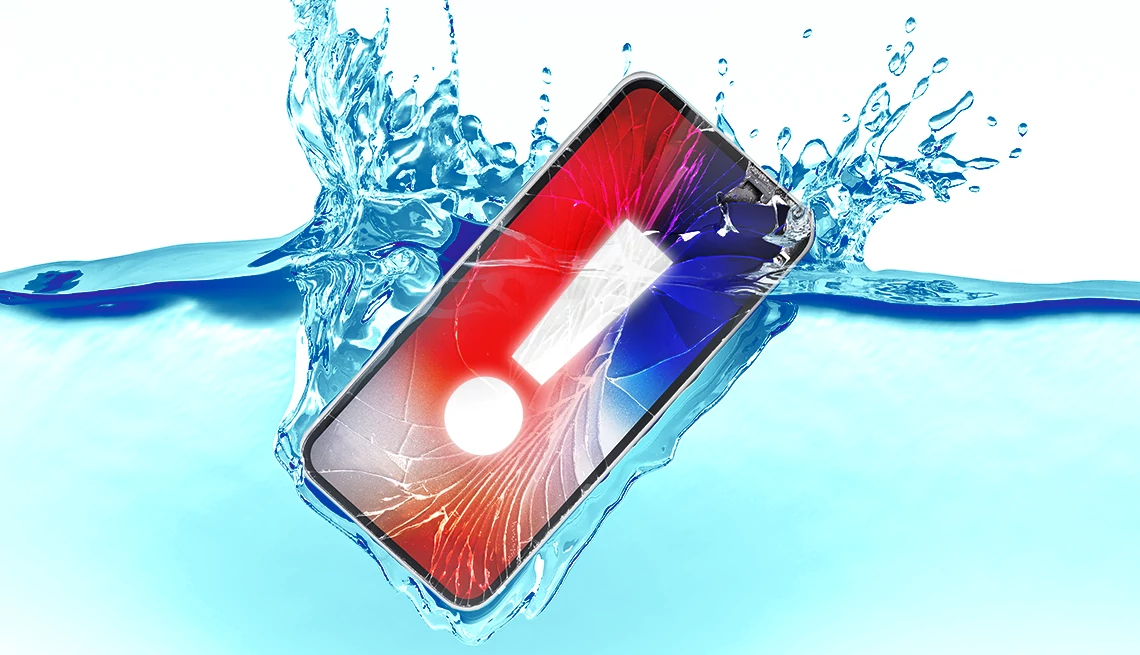AARP Hearing Center


I inadvertently dropped my smartphone in a pool of dirty water, and now it won’t turn on. I’ve been told submerging the phone in a sack of rice might work. Will it?
Placing a soaked phone in a bag of uncooked rice is familiar advice.
It also happens to be wrong. Yet this falsehood prevails.
Halfway through a recent vacation to Ireland, clumsy me dropped my iPhone 15 Pro Max down a Dublin sewer grate while taking a picture. Don’t ask.
The life of my sure-to-be-lost-forever handset, which starts at $1,200, flashed before my eyes. Before I could even contemplate the hassle of having to replace the phone while in Europe, a stranger watching this play out approached.
He lifted the grate, reached in and pulled the phone from the sludge. It was filthy but still turned on.
The man made it clear his sacrifice wasn’t an act of benevolence but rather came at a price. Ever, um, grateful, I happily slipped him a few euros. Before we split, he told me what he’d do if he were me: Place the phone in rice, the theory being it would absorb all the moisture.
Presumably, the guy hasn’t seen the support article Apple posted online this year. The iPhone maker explicitly said not to put a liquid-infused phone in a bag of rice because it “could allow small particles of rice to damage your iPhone.”


Ask The Tech Guru
AARP writer Ed Baig will answer your most pressing technology questions every Tuesday. Baig previously worked for USA Today, BusinessWeek, U.S. News & World Report and Fortune, and is author of Macs for Dummies and coauthor of iPhone for Dummies and iPad for Dummies.
Water resistance helps to a point
As with many premium smartphones, including most Samsung Galaxy models and Google’s latest Pixels, my iPhone is dust-, splash- and water-resistant. So it had an excellent chance of surviving a dunking.
It carries an international standard IP68 rating; the IP stands for ingress protection. Apple says the rating means the device can withstand maximum depth of 6 meters — 19 feet, 8¼ inches for those of us who need the conversion from metric to imperial — for up to 30 minutes. Other manufacturers cite different tolerances for IP68.
But water-resistant isn’t the same as waterproof, and liquid in a phone still can cause considerable damage. Moreover, Apple says water resistance is not a permanent condition and can decrease with normal wear.
Samsung also warns of damage from liquids, especially the salinities or impurities in drinks, seawater or a swimming pool’s chlorinated water.


































































You Might Also Like
Here’s How to Safely Remove Files From a Thumb Drive
Merely deleting files may leave crucial remnantsI’m Ready to Ditch My Landline But Not the Phone Number
You can keep it. Tech expert Ed Baig can help you outAARP Solves 25 of Your Problems
We tapped top pros to take on today’s most common health, money, home and tech issues
Recommended for You